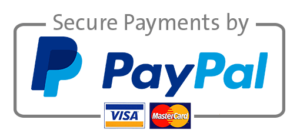Part I: Primary source analysis Write a brief source analysis for each of the following two primary sources. Each analysis should be 250 words. A good analysis will make a clear historical claim (thesis), will use the primary source as evidence for that claim, and properly contextualize the source. Make sure that you get the context right: which year? what else is happening? how does it fit into the larger story. When writing your essay, keep in mind the model of the “6 C’s of primary source analysis”: Content (what is the text about, what are the main ideas?) Citation (who is the author?) Context (what else is going on at the time that is relevant for your understanding of the primary source?) Connection (prior knowledge: link the source to other things you know and connect this source to the broader historical narrative about the Holocaust) Communication (what is the point of view of the author of this source? What seems to be the agenda or goal behind it? who is the intended audience?) Conclusions (what does this primary source contribute to your understanding of the history of the Holocaust, what is its significance?) 1 “… I was given the command to send twenty-odd thousand Jews out from the ghetto; if not—‘We will do it.’ And the question arose: ‘Should we take it over and do it ourselves, or leave it for others to carry out?’ But being dominated not by the thought ‘How many will be lost,’ but by the thought ‘How many will be saved,’ we … came to the conclusion that as difficult as this will be for us, we must take into our own hands the carrying out of the decree. … I must cut off limbs in order to save the body! I must take the children because, if not, others could also, God forbid, be taken.” 2 “The wrongs which we seek to condemn and punish have been so calculated, so malignant, and so devastating, that civilization cannot tolerate their being ignored, because it cannot survive their being repeated. That four great nations, flush with victory and stung with injury stay the hand of vengeance and voluntarily submit their captive enemies to the judgment of the law is one of the most significant tributes that Power has even paid to Reason. … The most savage and numerous crimes planned and committed by the Nazis were those against the Jews. … It is my purpose to show a plan and design, to which all Nazis were fanatically committed, to annihilate the Jewish people. … Extermination of the Jews enabled the Nazis to bring a practiced hand to similar measures against Poles, Serbs, and Greeks. The plight of the Jews was a constant threat to opposition or discontent among other elements of Europe’s population: pacifists, conservatives, Communists, Catholics, Protestants, Socialists. …” Part II: Essay Write a four-paragraph essay addressing the topic below (introduction; two paragraphs developing your idea and discussing specific evidence; conclusion). Refer to your lecture notes, readings, and textbook for context and specific examples in order to develop an historical argument. The essay must have a clear thesis statement, and you need to develop your thesis based on specific historical evidence drawn from the material discussed in this class. The essay will be about 500 words. To receive full credit, your essay needs to be driven by a clear argument and needs to provide clear evidence that you are drawing on course lectures and readings. Do not rely on other sources drawn from the internet. The Holocaust unfolded in different ways in different European countries. Discuss two countries as examples to show two different patterns of how European nations responded to the Nazi genocide. How did each of these countries deal with its Jewish population during the Holocaust? What different patterns of responding to the Holocaust do they reflect? What do you think explains these differences?
Mastering the Art of Online Learning: Your Guide to Acing Online Courses
Introduction
In recent years, the popularity of online courses has skyrocketed, offering learners the flexibility to acquire new skills and knowledge from the comfort of their homes. However, succeeding in online courses requires a different approach compared to traditional classroom settings. To help you make the most of your online learning experience, this article presents essential strategies and tips to ace your online courses.
1. Set Clear Goals and Plan Ahead
Before embarking on an online course, establish clear goals and objectives. Determine what you hope to achieve by the end of the course and break down your goals into manageable milestones. Create a study schedule that aligns with your other commitments, ensuring you allocate dedicated time for coursework, assignments, and revision.
2. Create a Productive Study Environment
Establishing a conducive study environment is crucial for online learning success. Find a quiet, well-lit space where you can concentrate without distractions. Remove any potential interruptions, such as notifications from social media or email. Organize your study materials and have a reliable internet connection to ensure seamless access to course materials.
3. Actively Engage in the Course
Active participation is key to mastering online courses. Engage with course materials, including videos, readings, and interactive components. Take comprehensive notes, highlighting key concepts and ideas. Participate in discussion boards, forums, and virtual meetings to interact with instructors and peers, fostering a sense of community and enhancing your understanding of the subject matter.
4. Manage Your Time Effectively
Online courses offer flexibility, but it’s essential to manage your time wisely to avoid falling behind. Create a detailed schedule, allocating specific time slots for coursework, assignments, and studying. Break down larger tasks into smaller, manageable segments to prevent procrastination. Prioritize tasks based on deadlines and dedicate focused time to each one, ensuring consistent progress throughout the course.
5. Develop Effective Communication Skills
Online courses often rely on written communication, making it crucial to hone your skills in this area. Be concise and clear in your written responses, paying attention to grammar and spelling. Actively participate in discussions, asking thoughtful questions and providing constructive feedback to your peers. Regularly check your course emails and notifications, ensuring you stay updated with any important announcements or changes.
6. Utilize Available Resources
Take full advantage of the resources provided by your online course platform and instructors. Familiarize yourself with the learning management system (LMS) and explore its features. Access supplementary materials, such as textbooks, lecture slides, and external resources recommended by instructors. Utilize online libraries, research databases, and tutorial services to deepen your understanding of the subject matter.
7. Stay Motivated and Engaged
Maintaining motivation throughout an online course can be challenging, particularly when faced with competing priorities or a lack of face-to-face interaction. Set short-term goals and reward yourself upon their completion. Connect with fellow learners through virtual study groups or online forums to foster a sense of camaraderie. Regularly remind yourself of the benefits and personal growth associated with completing the course successfully.
8. Seek Support and Clarification
Don’t hesitate to seek support or clarification when needed. Reach out to your instructors for guidance or clarification on course material. Utilize online discussion forums to ask questions or engage in collaborative problem-solving. Leverage the support services provided by your course platform or institution, such as technical support or academic advising.
Conclusion
Online courses present unique opportunities for self-paced learning and personal growth. By setting clear goals, creating a productive study environment, actively engaging with course materials, and managing your time effectively, you can maximize your chances of acing online courses. Remember to stay motivated, seek support when needed, and make the most of the available resources. Embrace the flexibility and adaptability of online learning to achieve your educational goals.








Recent Comments